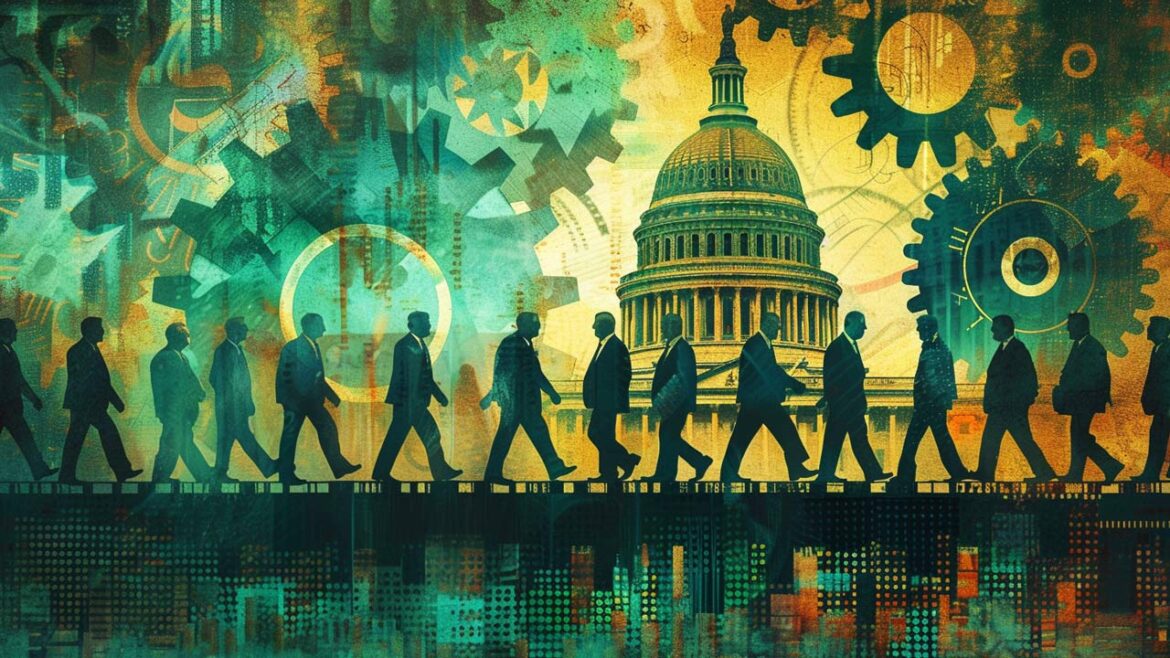Gold has all the potential to go unprecedentedly high. But silver will be gold on
Site:
Precious metals news
Join Mike Maloney in this revealing video as he shares his personal journey of taking physical delivery of his Tesla stock certificates.
The Bureau of Land Management is a federal agency that controls 245 million acres of land and controls 30% of the country’s mineral resources. On the East Coast, it manages little land but manages an enormous share of Western states. It owns over two-thirds of Nevada. This gives the federal government enormous sway over the West. Want to go hunting? Want to start a logging company? Want to go hiking? Better make sure it’s okay with the federal government first.
 METALS & MINERS INTERVIEW: The Coming Energy Cliff Will Propel Gold & Silver Prices To New Highs
METALS & MINERS INTERVIEW: The Coming Energy Cliff Will Propel Gold & Silver Prices To New HighsMarch 21, 2024
I sat down with Gary at Metals & Miners to discuss the Energy Cliff's implications for the precious metals market and prices. Unfortunately, the market is totally unprepared for the massive Cost-Push Inflation that will occur as the global economy suffers from energy constraints in the years ahead...
 MASSIVE SURGE IN EUROPEAN SILVER ETF INVENTORIES: Who's The Big European Silver Investor??
MASSIVE SURGE IN EUROPEAN SILVER ETF INVENTORIES: Who's The Big European Silver Investor??March 21, 2024
Something very interesting is taking place in the Silver Market. In just the past week, one of the European Silver ETFs saw a massive increase in silver inventories. So, who is the Big European Silver Investor? This is interesting after the record Indian silver imports last month...
West Texas Intermediate crude oil saw a roughly 2% decrease to settle near $81, marking a slowdown in the recent price surge to the highest since late October. The decline aligns with technical signals indicating overbought conditions and the peak of algorithmic long position buying, suggesting potential for a shift in price momentum to the downside, according to Daniel Ghali, a commodity strategist at TD Securities.
~$2.5 Billion in Liquidity in #Silver Futures trading as the price moves into what appears a significant breakout mode:
The UK reported a welcome decline in inflation to its lowest since September 2021, exceeding analysts' predictions. This news comes as the Federal Open Markets Committee convenes to discuss US interest rates, with the outcome to be announced later today. While no change in rates is anticipated, the Committee’s projections on future rate changes, known as 'dot plots', are highly anticipated and could signal significant market cues.
Mar 20, 2024 - 13:17:01 PDT
Fed Chair Jerome Powell said Wednesday that the January and February consumer price index and the January personal consumption expenditures price index were “quite high, but there's reason to think that, at least for the first month of the year, that “seasonal effects” were at play. “We don't want to be completely dismissive of it,” Powell said. “I always try to be careful about dismissing data that we don't like—so you need to check yourself on that.”
Analysts at PIMCO say that for the Fed to reach its goal of lowering inflation to 2%, we need fewer people to be employed. Reduced incentives to offer raises and bonuses and less spending from the “resilient” American consumer can help cool down inflationary pressure. But there’s an elephant in the room: Why do we let a handful of unelected central planners decide what’s best for markets (and human beings) to begin with?
 The Ticking Debt Bomb: How to Safeguard Your Investments from the Inevitable
The Ticking Debt Bomb: How to Safeguard Your Investments from the InevitableMar 20, 2024 - 06:50:27 PDT
According to Wharton Professor Kent Smetters and insights from notable hedge fund managers Mark Spitznagel and Ray Dalio, the US is on the verge of a severe economic downturn, potentially culminating in the worst stock market crash since 1929 due to an unsustainable debt trajectory. Federal spending has significantly outstripped tax revenue, a trend exacerbated by the global financial crisis and further intensified during the pandemic. To hedge against an economic downturn, Smetters recommends buying bonds that adjust for inflation.
Lisa Shalett, the Chief Investment Officer at Morgan Stanley Wealth Management, is highlighting the potential risks to US stocks from the increasing trend of de-dollarization. She notes that the US dollar's dominance in global trade and its status as a primary reserve currency are being challenged, putting structural pressure on the dollar that could negatively impact US equities. Shalett advises investors to brace for a shift in the US dollar regime, citing factors such as the surge in gold and bitcoin prices, the termination of Japan's yield curve control, and deteriorating US-China relations. These developments threaten to reverse the benefits the US has enjoyed from the dollar's strength, including low import inflation and affordable energy costs, which have been fundamental in supporting high liquidity and financing for US deficits and debt.
Mar 20, 2024 - 06:30:16 PDT
According to U.S. Attorney's Office, Northern District of Illinois, a 52-year-old from Houston, Texas, has been charged with federal fraud for leading a digital currency scheme swindling investors out of over $10 million. From 2018 to 2023, Dunlap and associates falsely marketed the Meta-1 Coin, claiming it was backed by an art and gold portfolio valued at approximately $44 billion. The indictment reveals Dunlap manipulated the Meta-1 Coin's market price using automated software, inflating its trading volume on a fabricated exchange platform. If convicted, he faces four counts of mail fraud and was arrested in Virginia, with orders for his removal to Chicago for trial.
UK inflation experienced a significant drop to 3.4% in February, reaching its lowest level since September 2021 and falling below economists' expectations. This decline from January's 4% rate marks a continuation of the trend towards easing inflation, particularly noted in the costs of food, restaurants, and cafes. Despite the overall reduction, housing and fuel prices applied upward pressure on the inflation rate. Notably, food and non-alcoholic beverage prices have risen at the slowest annual pace since January 2022, highlighting an eleventh consecutive month of slowing inflation rates from a 45-year peak in March 2023.
Despite historically high interest rates set by the Federal Reserve, the anticipated US recession has surprisingly failed to materialize. This anomaly has left economists scratching their heads, especially given the typical downturns following past rate hikes aimed at curbing inflation. The resilience of the US economy is attributed to several factors: homeowners benefiting from exceptionally low mortgage rates during the pandemic, robust household finances, and a job market that remains strong despite aggressive monetary tightening.
 MASSIVE COST PRESSURES TOP 6 SILVER MINERS Q4 2023 UPDATE: The Groups' Total Breakeven Was Higher Than Silver Market Price
MASSIVE COST PRESSURES TOP 6 SILVER MINERS Q4 2023 UPDATE: The Groups' Total Breakeven Was Higher Than Silver Market PriceMarch 20, 2024
The massive cost pressure that hit the primary silver mining industry pushed the group's total breakeven higher than the silver market price. The market seems to be now understanding this dynamic, which may be the motivation and driver of recent higher silver prices...
Florian Grummes from Midas Touch Consulting believes gold's price could reach $2,535 per ounce by summer 2024. This forecast follows gold ending a 13-year correction, with its price previously fluctuating between $1,900 and $2,075 an ounce. Despite potential short-term pullbacks, Grummes views any dips as buying opportunities, attributing the rally to strong demand from Chinese investors and central bank purchases, alongside a favorable macroeconomic environment for gold.
The market for commercial real estate collateralized loan obligations (CRE CLOs), a lesser-known financial instrument that funds high-risk real estate projects, is experiencing significant strain. CRE CLOs, which package speculative debt into bonds with various risk and return profiles, have seen a sharp increase in troubled assets. Over the past seven months, the proportion of these assets considered problematic has quadrupled, reaching over 7.4%. Some CRE CLOs are facing delinquency rates in the double digits, causing major stakeholders in this $80 billion industry to seek loan restructurings.
As Americans grapple with the financial strain from elevated loan costs across the board, all eyes are on the Federal Reserve's upcoming meeting. There's widespread speculation about whether the Fed will signal a shift from its recent series of interest rate hikes to potential cuts. The consensus among economists is that rate reductions could occur several times in 2024, but recent revisions, like Goldman Sachs' adjustment from four to three anticipated cuts, suggest a more cautious outlook. This reassessment reflects the complex economic landscape the Fed navigates as it balances inflation control with economic growth stimulation.
After 17 years of maintaining a negative interest rate policy, Japan's central bank has taken a historic step by raising its key interest rate from -0.1% to a range of 0%-0.1%. This move marks a significant shift in Japan's economic strategy, reflecting a response to rising consumer prices and increased wages. In 2016, Japan had lowered its interest rate below zero, aiming to invigorate its stagnant economy by encouraging spending over savings.
A recent Bankrate report reveals that 56% of Americans are financially unprepared to handle a $1,000 emergency expense. The survey found that only 44% could rely on their savings in such situations, with the majority having to resort to credit cards or borrowing from friends and family. According to Bankrate's senior economic analyst, Mark Hamrick, this situation emphasizes the broader issue of a consumer-based society that emphasizes spending over saving.











